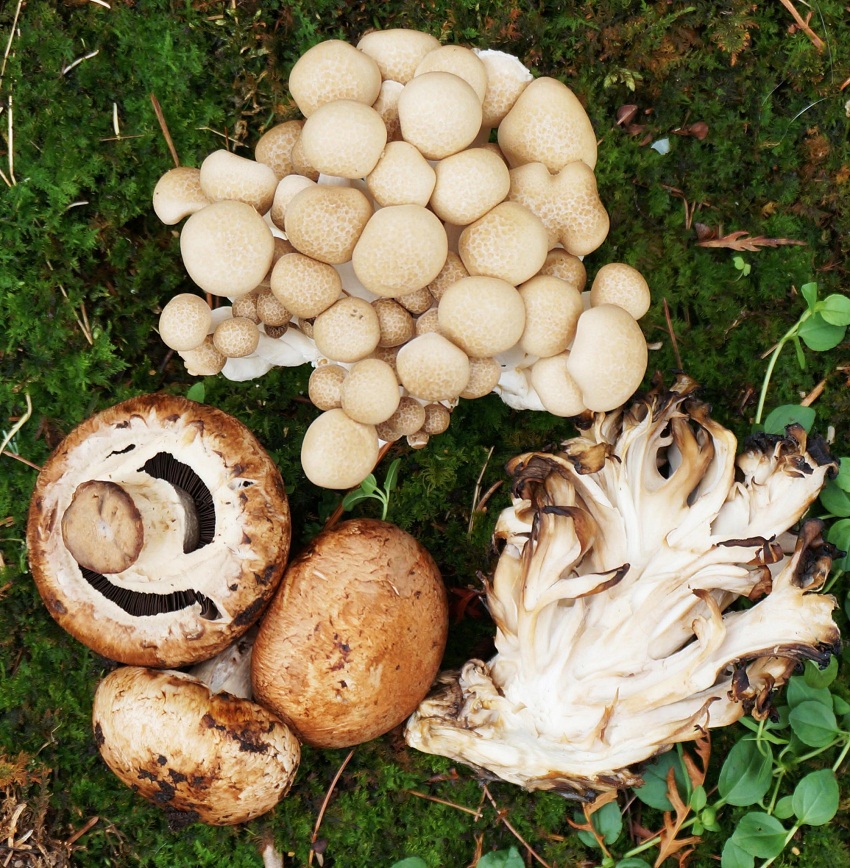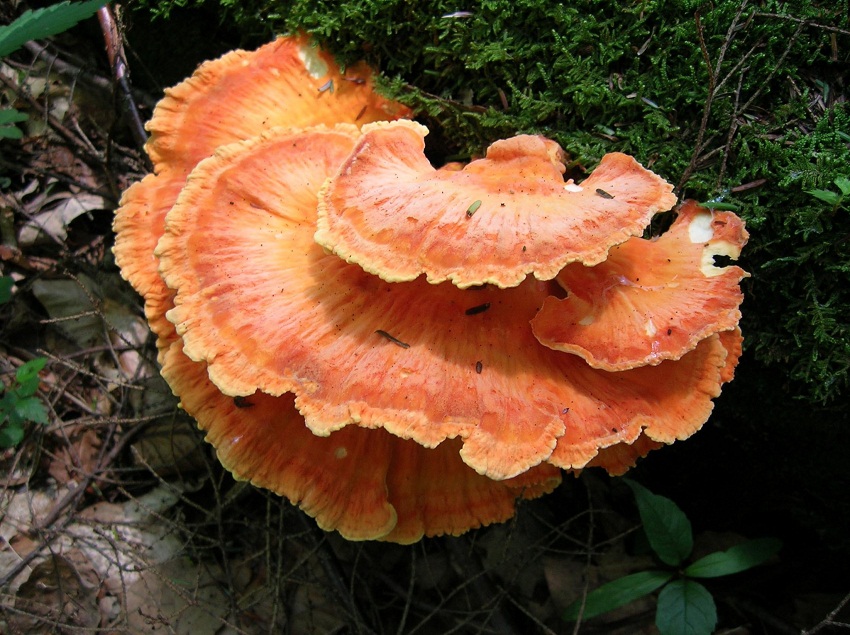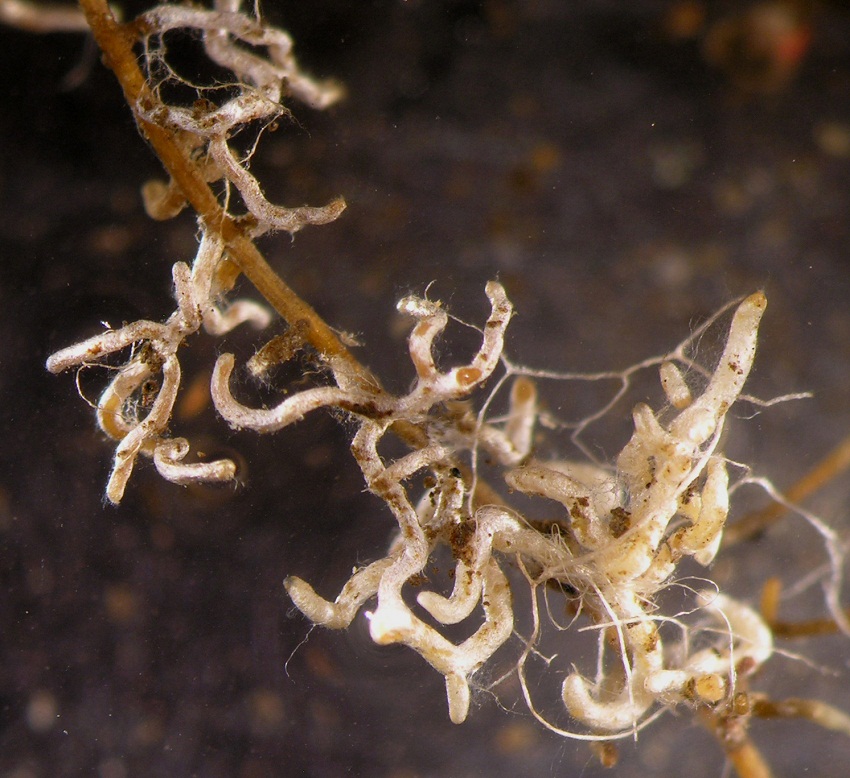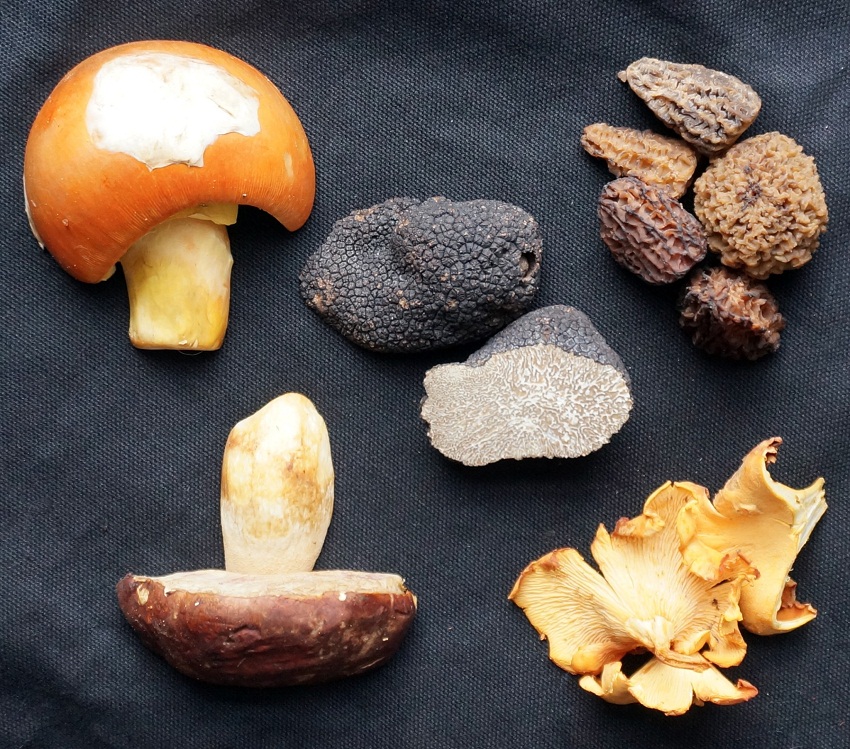Chefology: Nature’s Three Ways to Make a Delicious Mushroom
Mycologists don’t have a lot going for them in terms of woo factor. They tend to hang out in dark stuffy rooms with cabinets full of dried mushrooms. They use big words like conidiophore and cleistothecia. And they study organisms like the dung fungi, the destroying angel and this phallic beauty. But when Ben (a mycologist) and Scott (a chef) went on their first date five years ago, Ben’s endless rambling on the wonders of mushrooms helped win Scott over. He demystified edible mushrooms and explained how the biology of fungi affects the way mushrooms are grown. And with that spore of an idea planted in Scott’s head, the menus at No. 9 Park express an appreciation for the culinary and biological diversity of mushrooms.
One of the first mycological lessons that Ben taught Scott was that mushrooms have three different ways of making a living: by rotting dead stuff (saprotrophs), by sucking the life out of other living things (parasites), and by forming mutualistic relationships with tree roots (mycorrhizal symbionts). In this post we’ll explore how the biology of each of these types of mushrooms affects how they grow and how they are used in fine dining.
SAPROTROPHS
The most widespread mushrooms are the rotters. Known as saprotrophic fungi, these mushrooms live on materials that were once alive, like the stump of a tree or a pile of dung. As they spread their fuzzy mycelium, they release enzymes (chemical scissors) that chop up the organic material they live on and turn it into food. These are the mushrooms you see popping out of stumps of dead trees, in your lawn, or sometimes even in your houseplants. Because they are so good at rotting dead things, they play important roles in recycling nutrients in forests and other ecosystems.
Most saprotrophic fungi are easy to grow and many are now cultivated in mushroom facilities around the world. Because they are easy to grow anywhere (all you need is a cool damp room with dead stuff!), they are cheap and generally don’t have a specific season.
Three species of saprotrophic mushrooms. Top: beech (Hypsizygus tessellatus), Bottom left: cremini (Agaricus bisporus), Bottom right maitake (Grifola frondosa).
The most famous saprotrophic mushroom is Agaricus bisporus. This species gives us the button mushrooms, creminis, and portobellos that are so commonly found in grocery stores and scattered across your pizza. Other saprotrophs include oyster mushrooms (Pleurotus ostreatus) and shiitakes (Lentinula edodes). Like button mushrooms, you can usually find them in good markets year round.
Because most fine dining restaurants seek out interesting, seasonal ingredients, these ubiquitous saprotrophic fungi are rarely on tasting menus. But two saprotrophs stand out. The beech mushroom (Hypsizygus tessellatus) and wild harvested hen of the woods or maitake (Grifola frondosa) are delicious when pickled or simply roasted.
PARASITES
Another group of mushrooms are parasitic and make a living by stealing nutrients from another living organism (called a host). The host is commonly a living tree that may slowly die as the fungus sucks the life out of the tree. Chicken of the woods (Laetiporus species) are often saprotrophic on rotting dead logs, but they can also be parasitic on living oak trees.
Chicken of the woods (Laetiporus species), a parasitic mushroom.
The host of the parasite can also be another mushroom. The lobster mushroom is actually two fungi in one. The fungus Hyphomyces lactifluorum grows on the outside of another mushroom, giving the characteristic red appearance of the lobster mushroom. Because the host mushroom can be one of many species, the flavor varies from one batch of lobster mushrooms to the next.
We typically don’t like cooking with many edible parasitic mushrooms because they tend to have the unpleasant foamy and squishy textures that people negatively associate with mushrooms. These mushrooms benefit from being cooked long and slow in olive oil, or seared and marinated in olive oil, and seasoned heavily with garlic and herbs. Our favorite way to eat them is to grind them and treat them like meat. To do this, first grind or finely chop the raw mushrooms, then sear them in a heavy-bottomed pot with onions and garlic, tomatoes, and herbs, and then finish them off with cream and butter. The mushrooms can be served over pasta or alongside your steak or chicken. This method of cooking eliminates that unpleasant texture, while retaining the wonderfully earthy flavor.
MYCORRHIZAL
Some of the most difficult to find and most highly prized mushrooms are mycorrhizal. These fungi wrap their fuzzy hyphae around the roots of trees in the soil (mycorrhizal = fungus root). The tree gives the fungus sugar and in return, the fungus provides protection from pathogens as well as increased access to nutrients in the soil. Unlike the parasitic fungi that slowly drain their host of resources, the mycorrhizal fungi provide benefits to their host and the relationship remains friendly.
A root of an oak tree being colonized by a mycorrhizal mushroom. The shiny white roots are covered in fuzzy white fungal threads. For a sense of scale, the root is about 1/16 of an inch thick.
The mycorrhizal fungi are a culinary gold rush. Truffles (Tuber species) grow on the roots of oaks and hazelnuts and are the most sought after mycorrhizal mushrooms in the world. Boletes (Boletus edulis) are highly prized for their nutty flavors and grow on the roots of many tree species, including pines. A number of different chanterelles (Cantharellus species) are edible and grow on the roots of a wide variety of trees. Morels (Morchella species) are thought to be partially mycorrhizal, but they may also be saprotrophic or parasitic (it’s a challenging thing for mycologists to prove). The candy cap mushroom (Lactarius species) is a delicious dessert mushroom that tastes like maple syrup and grows with oaks and pines on the west coast of the US.
Mycorrhizal mushrooms. Top left: ovolo (Amanita caesarea), Top right: morels (Morchella), Bottom left: bolete (Boletus edulis), Bottom right: chanterelles (Cantharellus cibarius), Center: summer truffle (Tuber aestivum).
Mycorrhizal fungi are incredibly hard to cultivate, because you need to grow both the fungus and a living plant host. We haven’t figured out how to replicate this intimate interaction to produce large quantities of mushrooms. Most of these fungi are collected in the wild leading to a strong seasonality of mycorrhizal mushrooms. In spring the waves of morels begin – black, blonde, grey. They start small and get bigger as the summer warms up. Porcini show up in the early summer, disappear, then come back for early fall. Ovoli, or Caesar’s mushrooms (Amanita caesarea, the favorite of Claudius Caesar, emperor of Rome), come and go throughout the summer. They are always insanely expensive, there are only a few pounds available, and we always want them. Chanterelles enter the scene later in the summer. And black truffles make a triumphant entry in the late fall and early winter.
Understanding the ecology of the mushrooms can play a big role in the narrative that ties together a dish. Truffles are often mycorrhizal partners of hazelnut trees, so pairing truffles with hazelnuts within a dish is a nod to the ecology of producing the raw ingredients. Matsutake mushrooms (Tricholoma matsutake) are often associated with pine trees and we’ve used them at No. 9 Park with both pine nuts and pickled spruce tips with surprising success.
Peach and wild mushroom salad, a summer favorite at No. 9 Park. Morels, porcini, chanterelles, and black truffle all featured on this salad.
Knowing about the biology of these mushrooms also helps us respect the origins of the raw materials that make up our menus. Knowing the difficulty in finding these mushrooms, picking them, transporting them, or even the difficulty in simply getting them to grow at all makes us treat the mushroom differently. When a rare shipment of ovoli mushrooms are dropped off secretly by the back door of No. 9 Park, we all quietly and gently clean the stems, wash them by hand, and discuss how to use them. We consider their humble beginnings as a tiny filament wrapped around the root of a tree in a forest. As we work to highlight their flavors, we also savor their biology.







